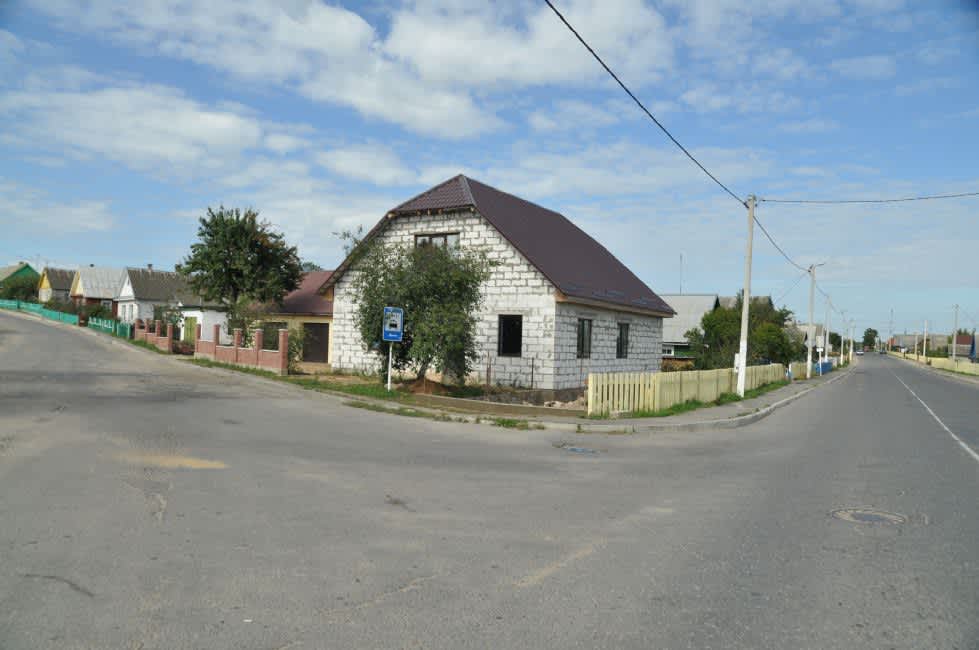
Glebokie
After World War I and the ensuing Soviet-Polish war of 1919-20, Glębokie became part of Poland. Its Jewish population dwindled, and the first Polish census (1921) recorded the presence of 2,844 Jews there. In addition to the two prewar Jewish schools and the Polish-language szabasówka (a state-sponsored school that did not hold classes on Saturdays), the town now had a Hebrew gymnasium and a "Handlówka" (a commercial college that taught in Yiddish). Three Yiddish-language newspapers were published in the town. Zionism was popular in Glębokie, and the kibbutz hachshara operated by the local Hechalutz cell attracted Jews from far-away localities. From the late 1920s, the leftist Hashomer Hatzair, the right-wing Beitar, and the centrist General Zionists party coexisted with the leftist Poalei Zion and the anti-Zionist socialist Bund. In September 1939, following the outbreak of World War II, Glębokie was occupied by the Soviets, who proceeded to suppress both the Zionist organizations and the Bund, and nationalized private trade and the factories. Nevertheless, the Jews welcomed the Soviet occupation, which was preferable to Nazi rule. Many Jews found jobs in the new Soviet administrative apparatus, including the police force. Hundreds of Jewish refugees from the German-occupied western regions of Poland arrived in Glębokie. In 1940-41, the Soviets engaged in repressions against "unreliable" elements, mostly the Polish minority. Many Jews, especially the more affluent families, also suffered, being deported to Siberia and to other eastern regions of the USSR.
In June 1941, the Soviet-German War broke out. On July 2, Glębokie was occupied by the Germans, who issued a number of anti-Jewish decrees: Jews were required to wear a "Jewish badge" (whose form underwent several changes) on their clothing; they were prohibited from communicating with non-Jews and leaving the town, etc. A Jewish council (Judenrat) was set up under the chairmanship of Gershon Lederman. The Nazis seized the Jewish property in several stages: First came the order to hand over "extra" food held in Jewish homes; then the Jews were forced to deposit their valuables at the commandant's office; they were later deprived of their winter clothing, etc. On October 22, 1941, a ghetto was established in Glębokie. The Glębokie Ghetto was among the last to be liquidated (only the Minsk Ghetto outlived it), and it was regarded as relatively safe by the Jews of the region. As a result, it became a magnet for Jewish fugitives from other ghettos in 1942-43. The Nazis also moved Jews from other settlements to Glębokie. As a result, the total number of victims of the Glębokie Ghetto far exceeded the prewar Jewish population of the town.
Individual killings of Jews, mainly suspected communists or violators of German orders, occurred from the very beginning of the German occupation. On March 25, 1942, the Nazis carried out the first mass murder in Glębokie: 110 Jews were killed in the Borek Forest. On June 19, 1942, the Germans and their local collaborators staged the largest massacre, shooting 2,200 "unnecessary Jews" in the Borek Forest. In summer 1943, following the Nazi murder operations and the resettlement of Jews from other localities in Glębokie, the town ghetto housed about 4,000 Jews.
Jews began to flee into the forests in 1942, especially after the June massacre. Some of them joined the Soviet partisans (not all of them survived), while others returned to the Glębokie Ghetto. A certain amount of weapons was smuggled into the ghetto, and some of its inmates formed a clandestine resistance cell, which planned to stage an uprising when the Germans came to annihilate the ghetto. The actual liquidation of the Glębokie Ghetto came as a surprise. On August 17, 1943, the so-called Gil-Rodionov Brigade, a Russian collaborationist unit, switched sides and joined the Soviet partisans. Before defecting, the Rodionovites had killed all the German officers in the brigade and attacked the Królewszczyzna railway station. With the defectors being poised to strike at nearby Glębokie, the Germans decided to liquidate the ghetto. On August 19, the SS and the local police surrounded the ghetto. The SS informed its Jewish inmates that they would be sent to the Majdanek camp for labor. Realizing that this announcement meant a new mass murder, the resistance group tried to fight back. Some of the Germans and their helpers were killed or wounded. The Germans then surrounded the ghetto with artillery and called in the air force. German aircraft flew at low altitude over Glębokie, pouring incendiaries on the town and setting it on fire. Many Jews were burned in their shelters, or killed by the Nazis on the spot.
Glębokie was liberated by the Red Army on July 3, 1944.

